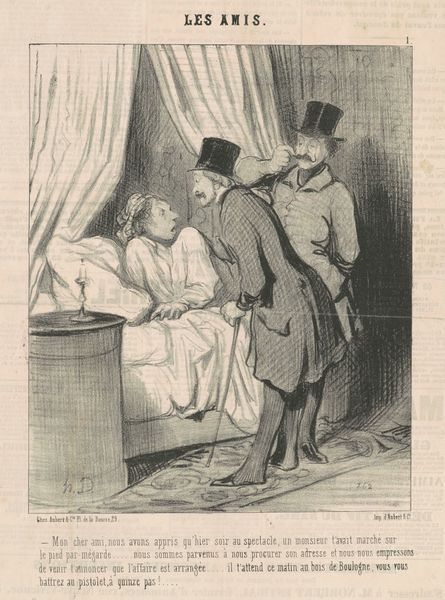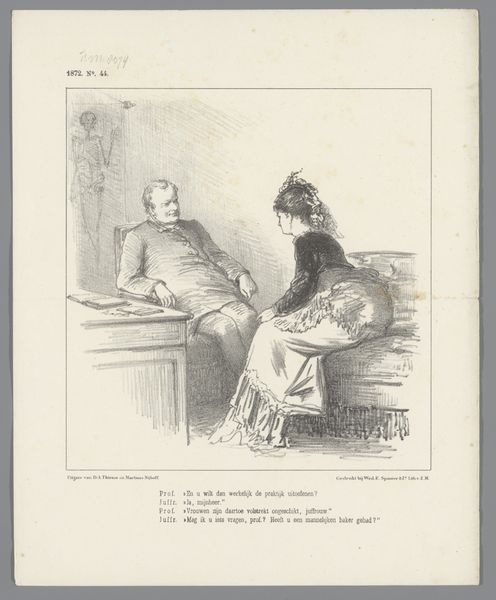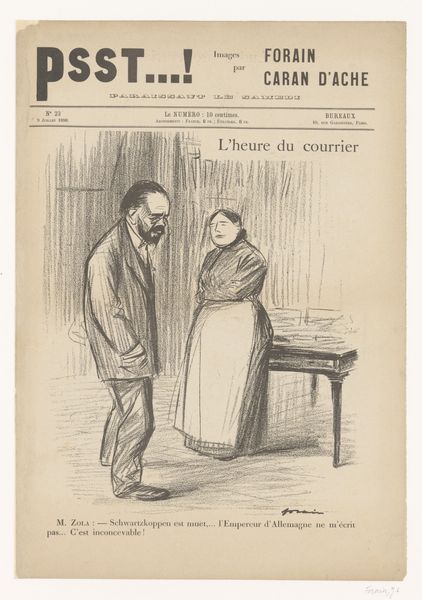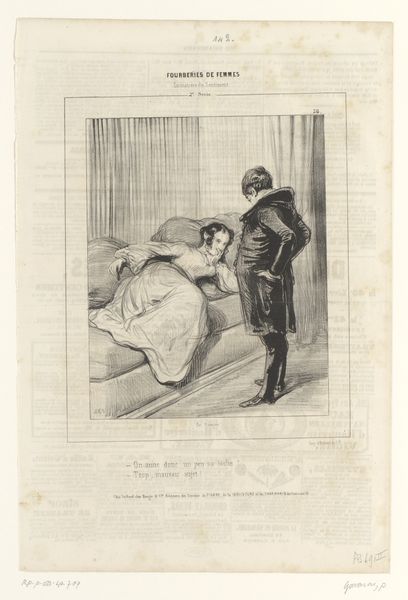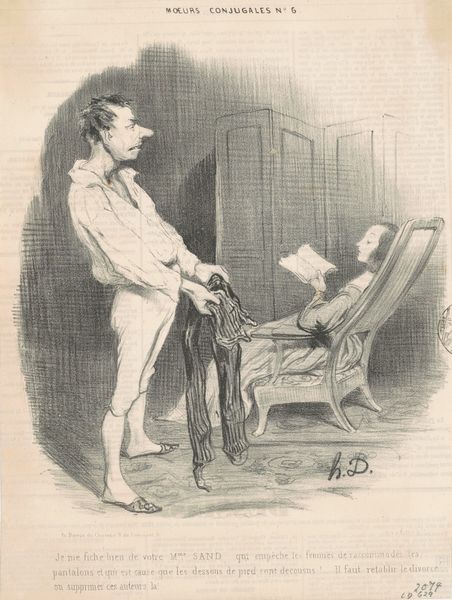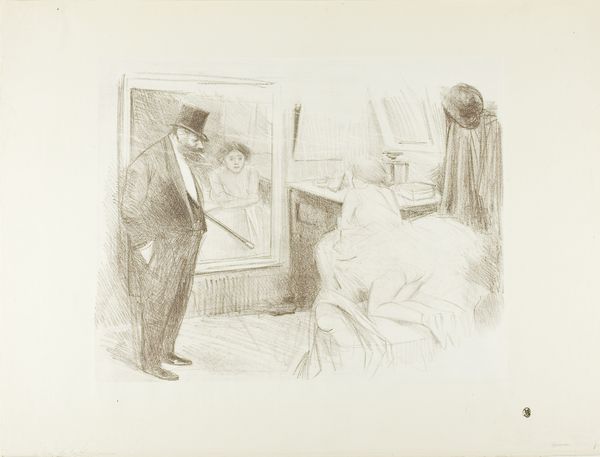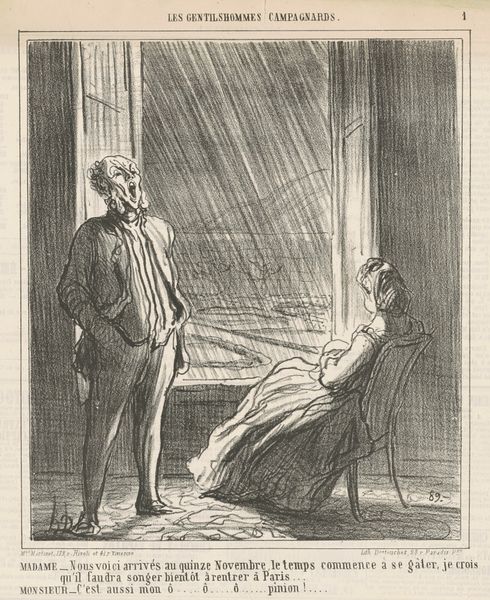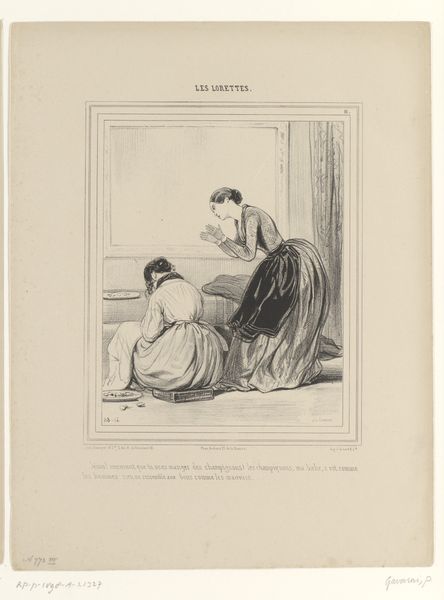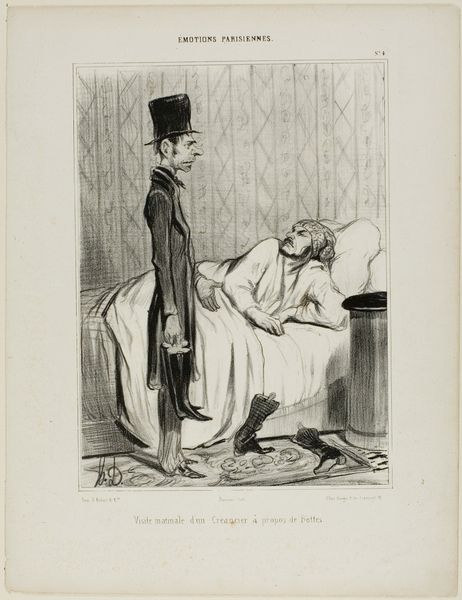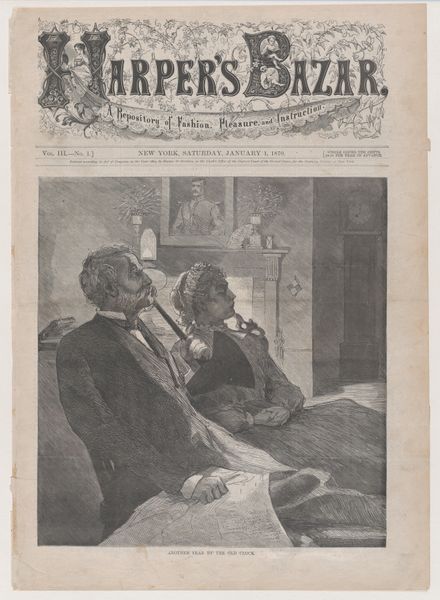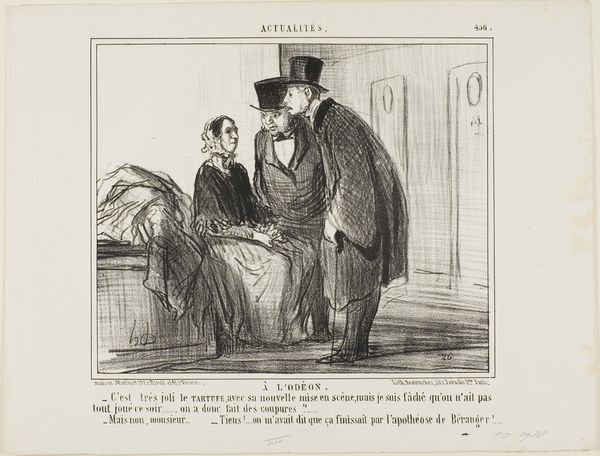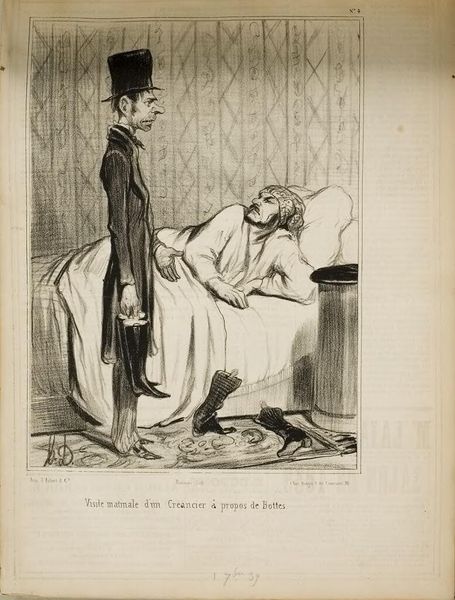
Dimensions: height 399 mm, width 279 mm
Copyright: Rijks Museum: Open Domain
Curator: Jean-Louis Forain’s 1898 graphite and pen drawing, "Caricature of Edmond de Rothschild returning from dinner", captures a moment thick with societal tension. What strikes you first about it? Editor: The claustrophobia of the scene, immediately. The man in the heavy coat looming over the figure in bed, the heavy drapes, the tight composition—it all feels airless, weighted down. Curator: The 'airless' feeling resonates when you consider the historical context. It appeared in "Psst...!", an anti-Dreyfusard satirical magazine. Rothschild, a prominent Jewish banker, is depicted after presumably attending a dinner. His companion’s line roughly translates to "Charming! No one dared to mention the Dreyfus Affair". Editor: That explains the bedridden figure’s expression – it reads to me as somewhere between relief and lingering anxiety. The averted gaze, the almost defensive posture, suggests someone who's had to swallow unpleasantness. This captures the weight of unspoken, charged conversation. Curator: Precisely. Forain uses caricature not just for humor, but as a vehicle for social critique. The Rothschild figure, burdened by wealth represented by the cane and hat, is contrasted with the other's vulnerability to embody the awkward tension surrounding Dreyfus. Forain taps into cultural anxieties regarding power, anti-Semitism and social pressure. Editor: Symbolically, the bed itself—a place of rest, vulnerability—becomes a site of forced silence, highlighting how deeply the Dreyfus Affair had permeated every aspect of life, even intimate spaces. The room almost reads as a confessional with unspoken secrets. Even the publication’s name is meaningful. "Psst…!" sounds like it carries secrets, conspiratorial tones. Curator: The 'Psst...!' title amplifies this undercurrent. In his work we see commentary on performative politeness against genuine belief. This specific cartoon became incredibly effective because it was less of an accusation but an observant eye. It highlights silence as violence or, perhaps worse, implicit endorsement. Editor: It really speaks to the lasting power of visual shorthand – how a few lines can evoke such a potent sense of unease and cultural turmoil. Curator: Agreed, seeing it with these nuances provides quite a lens for reconsidering our contemporary political discourse too.
Comments
No comments
Be the first to comment and join the conversation on the ultimate creative platform.

